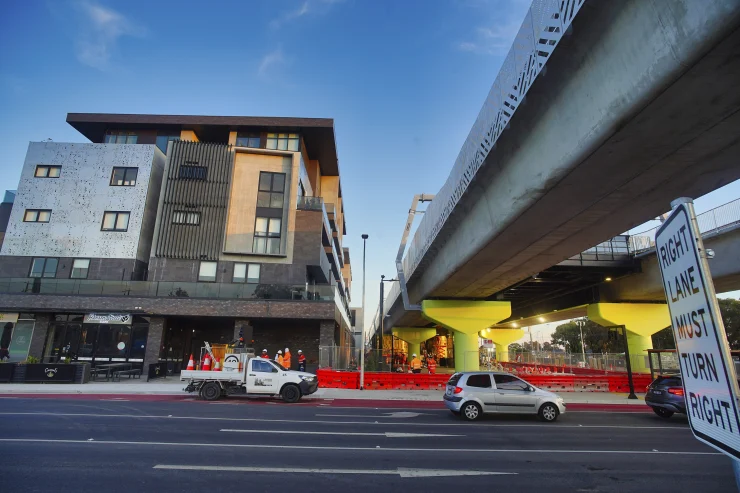The train from Melbourne’s CBD to Mernda takes an hour, trundling past the tightly packed terraced houses of Abbotsford and Clifton Hill until, to the north, they give way to the squat brick-veneer homes in Reservoir.
“Look at that wind,” a teenage boy – lugging a skateboard and decked out in low slung jeans – says to his friend as they stare out the carriage window. “It’s actually scary.”

The landscape gradually becomes more industrial, warehouses and commercial buildings, alongside swaths of green space like the Morang wetlands.
When the train draws to a stop in Mernda, the carriages are mainly empty. Only a handful of people get off.
We are at the end of the train line, where shiny newly built homes back onto green paddocks with grazing cows.
Mernda marks Melbourne’s fringe, where the city gives way to farmland – and it’s growing fast. The population has increased more 30 per cent, from 16,458 to 23,369, over the past four years.
The Age once asked author Helen Garner to spend a week taking day-trips by train out of Melbourne.
“I wrote about what entertained me or made me laugh” she writes in True Stories. “Mostly people talking, and landscapes.”
That was 1982, but in 2024 on the Mernda line, hardly anyone talks. Instead, they are glued to their devices.
Only the two teenage skaters converse, laughing as they watch videos on their phones and share a bag of chips from KFC.
Stephanie Montalti rarely catches the train. She lives and works in Mernda. No need to go into the city much.
She moved to the suburb 12 years ago, attracted by the good schools and open space for her children.
The Age



